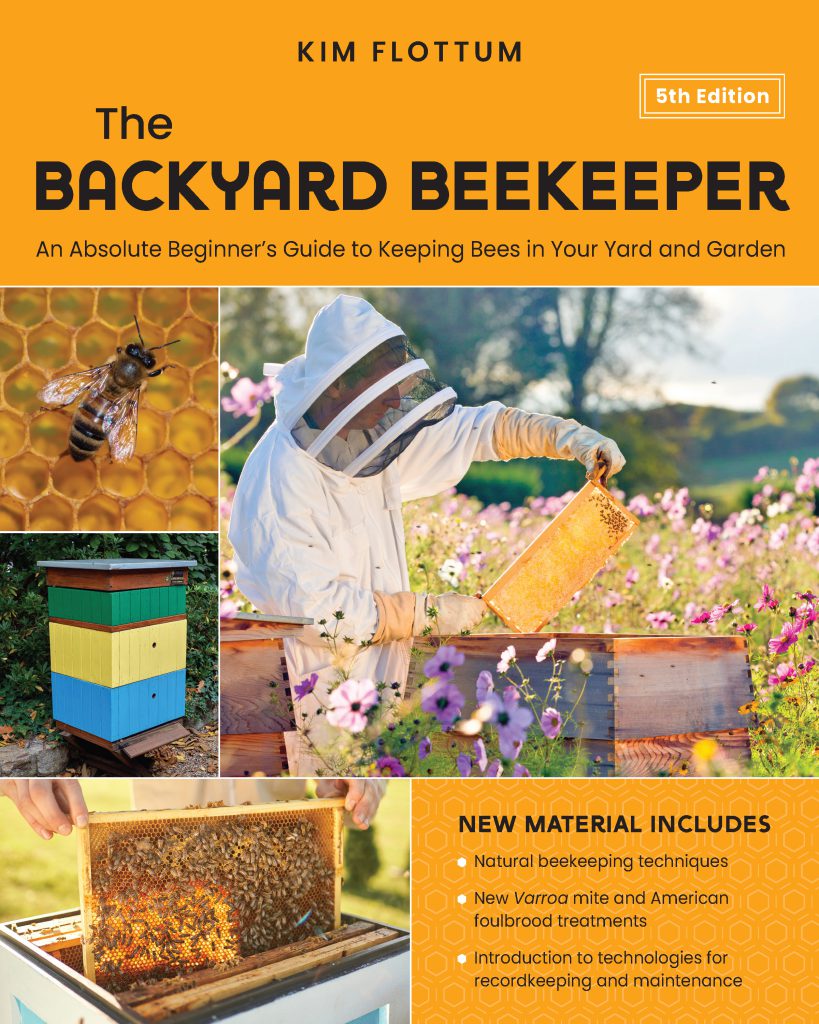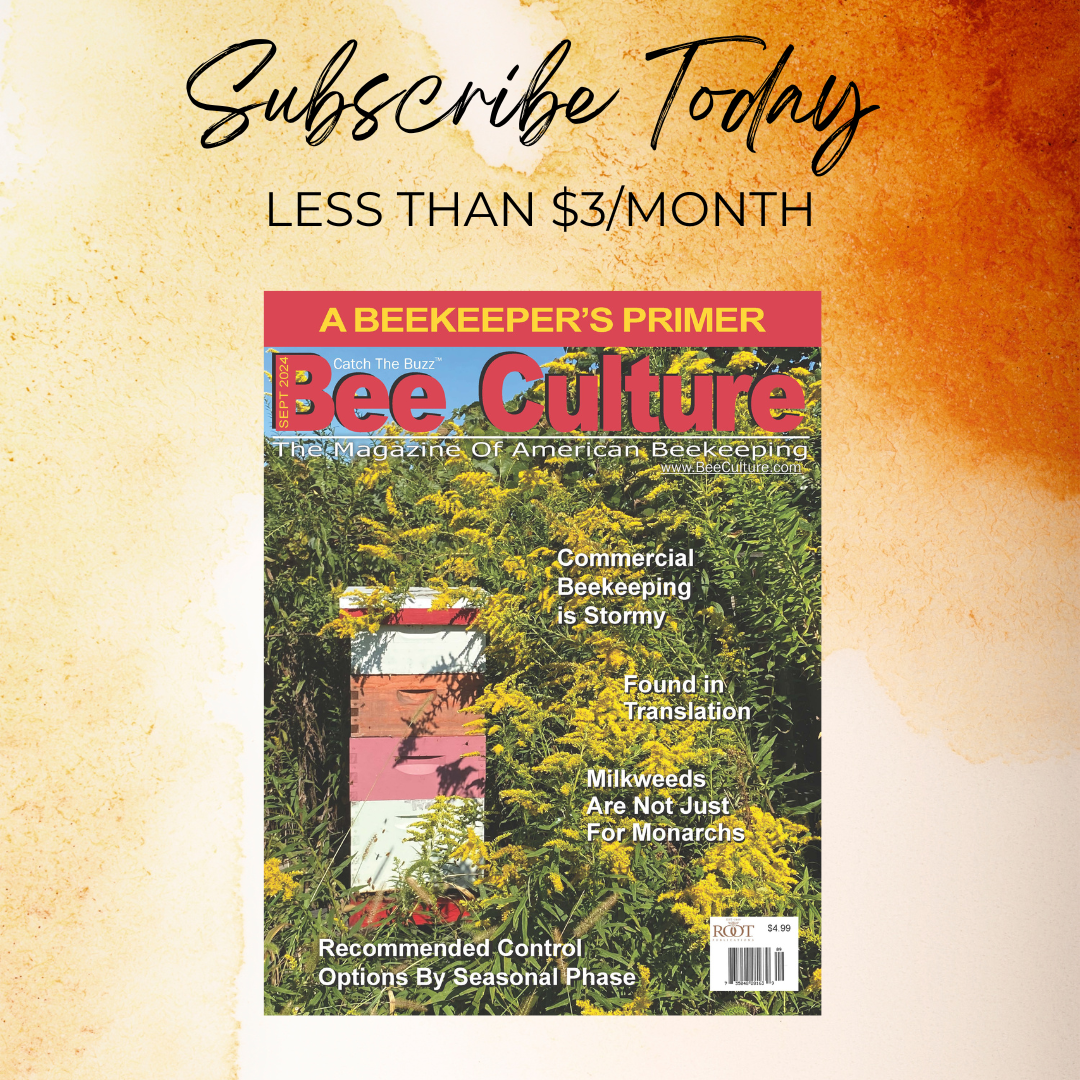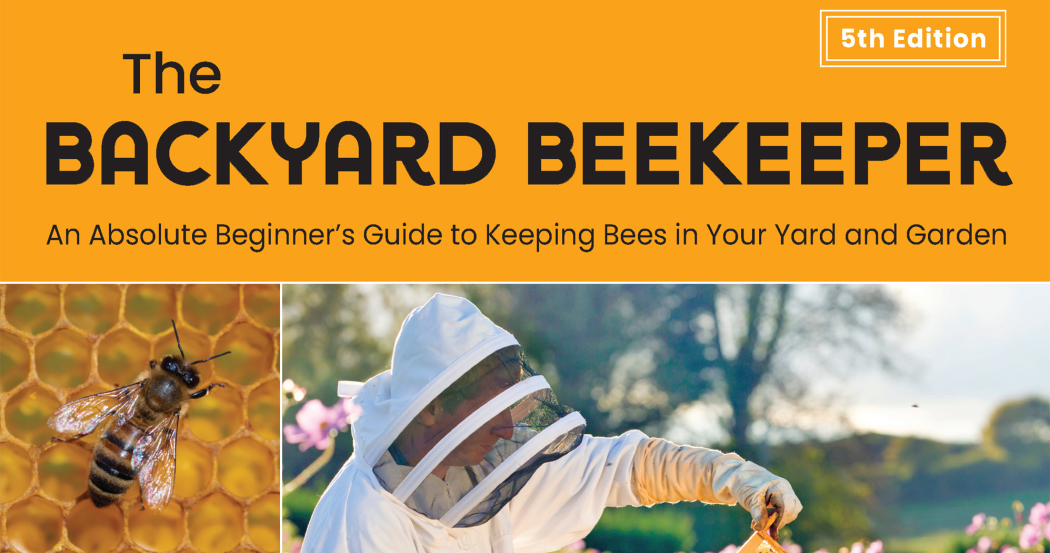 The Backyard Beekeeper
The Backyard Beekeeper
By: Dewey M. Caron
There is a revised 5th edition of The Backyard Beekeeper – An Absolute Beginner’s Guide to Keeping Bees in Your Yard and Garden, (Quarto Publishing). Why a 5th edition? Author Kim Flottum begins his preface “…Since the first edition of this book was published almost twenty years ago, a tsunami of change has crashed over the beekeeping world. The changes—and the speed with which they have occurred—have been nearly impossible to keep up with, let alone stay ahead of.”
Introducing the new 5th edition (six years since last revision) Kim wrote the revision: “…describes our most up-to-date understanding of the new challenges facing today’s beekeepers and some strategies for confronting and coping with them. You’ll find a new chapter on maladies, problems and solutions, as well as new information throughout the book that reflects recent advances in hive design, honey bee genetics, climate change and more.”
As in earlier editions, the flow of The Backyard Beekeeper invites you in and encourages your continued reading along. Photos that soundly support the text are abound. The introduction includes a bit of history, with interesting side boxes. The initial chapter is Starting Right and at 63 pages, double the size of any other chapter. This chapter starts with the apiary site, with a good amount of information on the challenges of keeping bees in urban areas, roof-top beekeeping and what Kim labels as “extreme urban beekeeping”. There is an interesting subject box on “how many?” (i.e. what colony load and bee density “have to do with it”).
Coverage of the hive follows then a good section on frames; Kim details wiring pure beeswax into frames. Sections on ancillary protective equipment and the major tools of smoker and hive tools are all very clear and solid. The chapter includes six pages on top bar hives and covers other hive types, including the flow hive. And of course, obtaining the bees (he recommends purchasing a nuc hive). Good solid information any beginner can use to go from zero to beekeeper.
The second chapter covers the bees. It begins “Your honey bee colony follows a predictable cycle over the course of an entire season. To successfully manage it, you need a mental picture of what should be happening throughout the year…” Chapter 2 coverage includes adults of the hive and a bit on anatomy, with larger sections on queens, swarming and supersedure. He covers action central, the broodnest (great focused photos). He relates how to determine and what to do for when queen replacement goes badly (“laying worker fix”), bee stings and bee communication.
Beekeeping, the emphasis of Chapter 3, “…is going to work from the ground up, starting like you do—with a brand-new package in your brand-new equipment. We’ll shepherd that colony through its first year and into the next season, so next year you’ll have all the information you need to continue.” That ambitious introductory statement is fully met. Package installation is covered in detail (over six pages) followed by continuing colony inspections with brood nest emphasis. You will enjoy the interest box “oops did I drop the queen cage?” He has great coverage on the importance of and what to record in a colony inspection. Chapter 3 concludes the season with his wintering discussion, leading us into the next Spring and finally swarming (especially how to catch one).
 Honey, Chapter 4, is an interesting 12 pages and covers topics from honey flow to honey sales. Two pages cover harvest of honey in the comb. Chapter 5 greatly expands 5th edition material of Maladies with solutions (31 pages). Varroa, chalkbrood and the foulbroods are thoroughly covered with an IPM emphasis. It is not gloom and doom, but quite enlightening. The section on how to sample adults for mite numbers is covered in detail with accompanying photos. He labels his chemical control section as “safe treatments.” Wax moth and small hive beetle are covered thoroughly.
Honey, Chapter 4, is an interesting 12 pages and covers topics from honey flow to honey sales. Two pages cover harvest of honey in the comb. Chapter 5 greatly expands 5th edition material of Maladies with solutions (31 pages). Varroa, chalkbrood and the foulbroods are thoroughly covered with an IPM emphasis. It is not gloom and doom, but quite enlightening. The section on how to sample adults for mite numbers is covered in detail with accompanying photos. He labels his chemical control section as “safe treatments.” Wax moth and small hive beetle are covered thoroughly.
Beeswax, Chapter 6, is the shortest chapter at eight pages. Waxing plastic foundation and processing beeswax with solar wax melters are included. Candles along with lotions and potents are covered nicely.
The last, most delightful chapter, is Chapter 7 25 Rules of Modern Beekeeping. His three “rules” for queens are:
- Queens must be raised in luxury
- Queens must be well mated before being sold or used
- Queens must be productive
The four bee rules are
- Your bees should be adapted to your location
- Your bees should be selected to match your management style and technique
- Your bees should be resistant to pests and diseases
- Your bees should be well behaved
There are a dozen beekeeping rules, three on Varroa (1. Learn about Varroa. 2. The best way to control Varroa is the worst way to make honey and 3. Use IPM treatments first, soft chemicals next and hard chemicals—never) and finally three beekeeper rules (1. Seek continuing education, 2. Know all about beekeeper safety and 3. Food safety isn’t the last rule, it’s the first). Each of the rules are elaborated on and simply explained. They can and should be in all our beekeeping “rules”. More experienced beekeepers might start this 5th edition reading this chapter first.
The seven page glossary is very helpful and there is a section on resources (books, magazines, suppliers, 10 industry organizations and two digital monitoring devices (Broodminder and Hive Tracks)), acknowledgments and a well done index so you can quickly look up and review information of particular interest.
In his dedication and acknowledgment, Kim Flottum thanks UWisconsin plant specialist Chuck Koval and USDA bee researcher Eric Erickson, the beekeepers in Connecticut and John Root who hired Kim as editor of this magazine (called Gleanings in Bee Culture at the time). Kim concludes his dedication and I echo in this review “So thanks. And, of course, the bees. First, last and always. I truly hope this work helps you enjoy them as much as I have.” I am sure the revision will not merely grace your bookshelf but will soon become part of your Winter and bee season re-reading.







